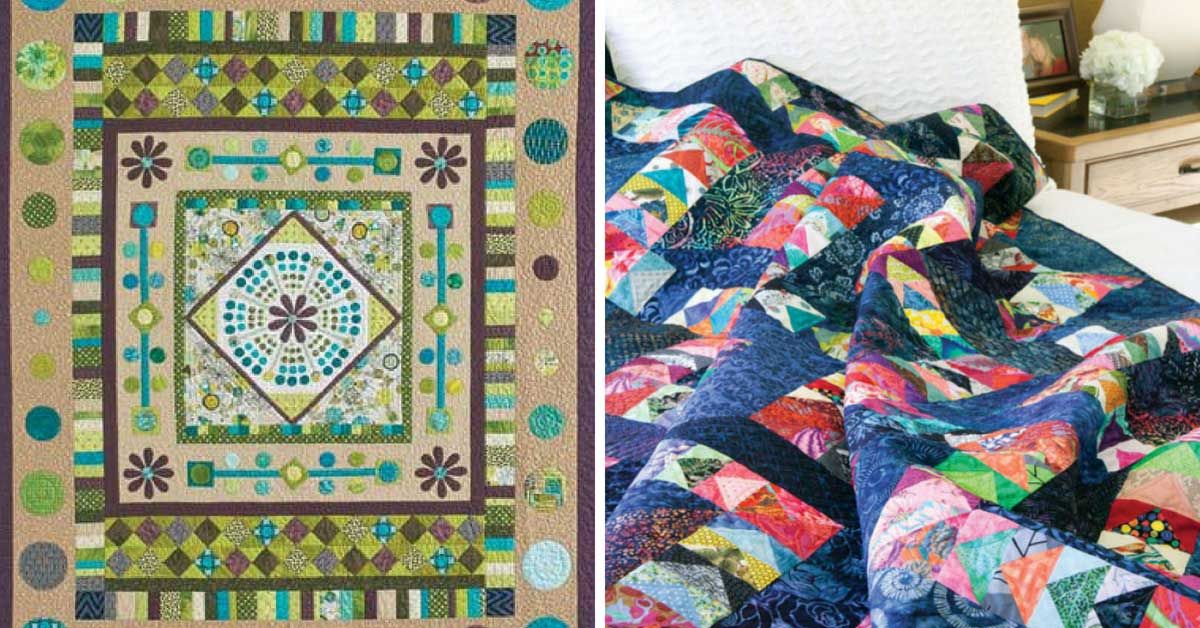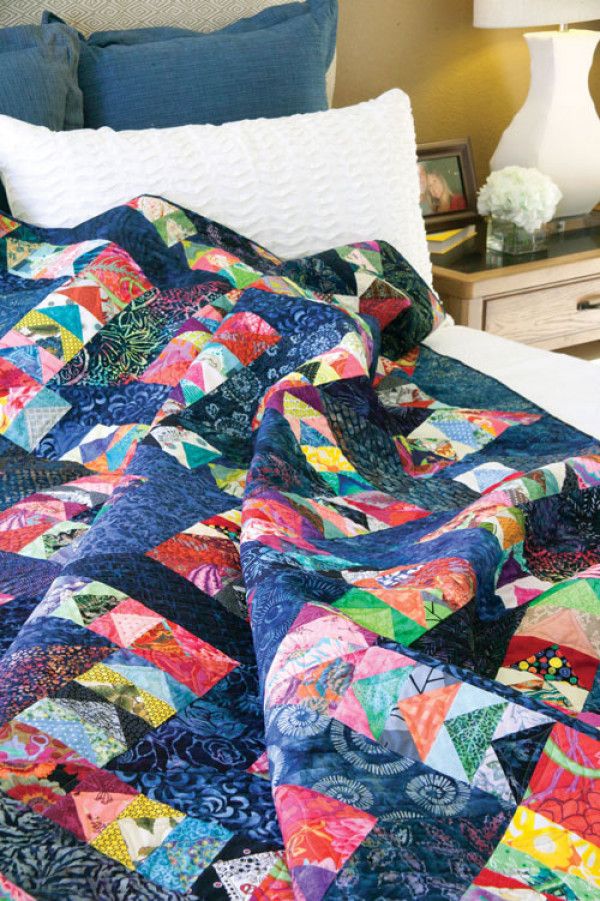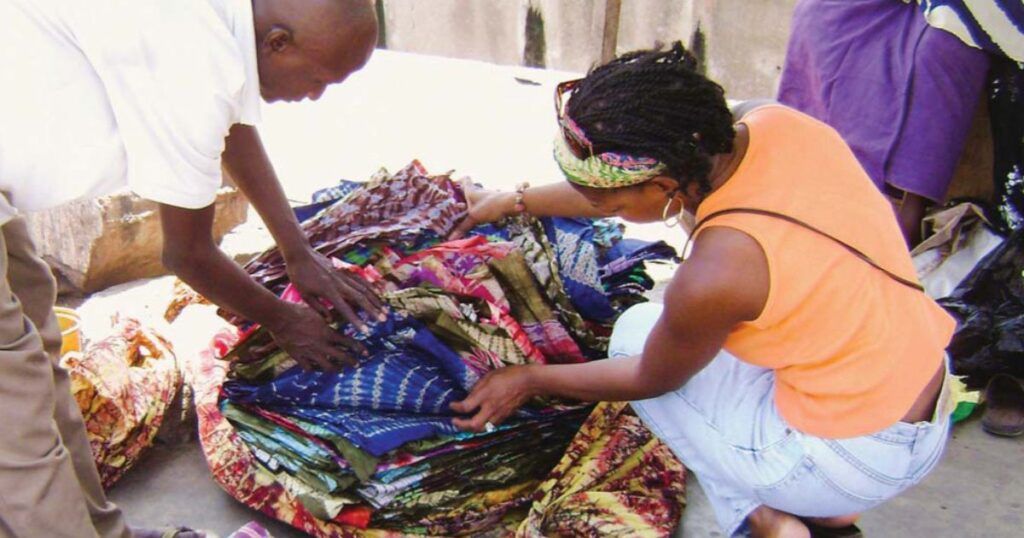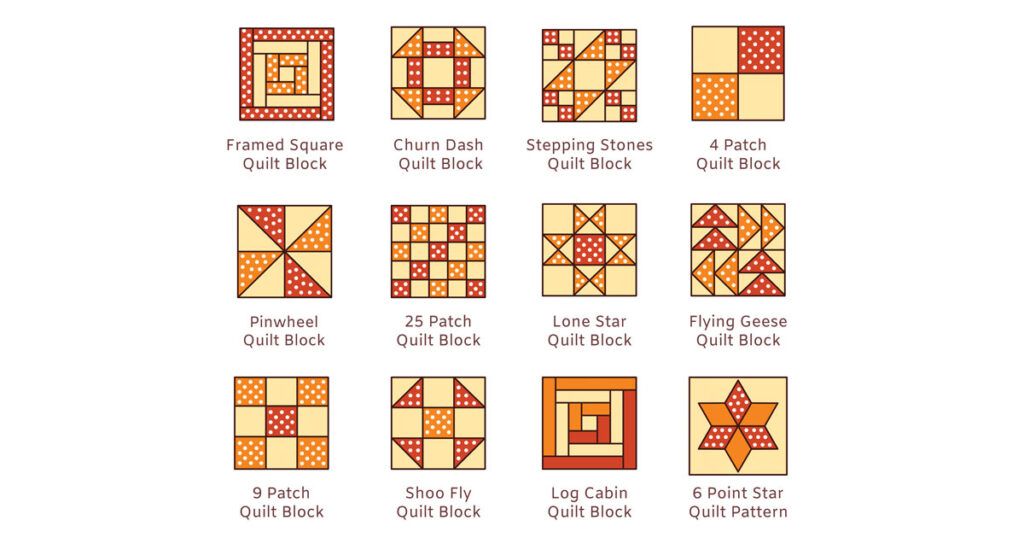Quiltmaker’s Top Tips for Group Quilts

If every quilt tells a story, then a group quilt is an anthology that recounts a range of experiences and personalities. Getting everyone on the same page, however, is key. Set your next group quilt on the path of success with these tips for what to do—and what not to do.
Round robins, row quilts, block exchanges, online bees—quilts made by a group are often more than the sum of their parts. Successful group quilts are fun to make and result in participants who are delighted and amazed by each member’s contributions to the finished products. On the other side of the coin, unsuccessful group quilts can lead to disappointment if guidelines are not clearly agreed to at the beginning and then adhered to by all of the participants.
Let’s start with defining the most popular types of group quilt projects.

Types of Group Quilt Projects
- Round Robins: typically pieced from the center out. Participants make their own center block or medallion, which are passed around the group person by person, each in its own box. Participants add a border of their choosing (within certain parameters) then pass it along to the next person. Owners do not see their quilts in progress until the big reveal after they’re finished.
- Block/Row Exchange: aka a block swap. Each participant makes enough versions of an agreed-upon block or unit for every other member of the group to receive one. This can also work for row quilts where participants come up with designs based on a given theme.
- Online or Virtual Quilting Bees: particularly popular among modern quilters. Participants each take a turn at deciding the block design and color palette the group will work on. Participants then send their block to the organizer who plans the quilt’s design and sews all the blocks together to finish a quilt top.

Quiltmaker Associate Editor Anissa Arnold’s quilting group, the UFOers of Denver, Colorado, has been together since the early 1990s. They meet one Saturday each month to “binge sew” in addition to regular retreats in the mountains. It’s a tight-knit group bound by family ties and treasured friendships built over time. Anissa asked her fellow group members to share some of their collective wisdom gained from working together on projects over the years, particularly for round robin quilts.
What to Do:
- Decide on the size of the group; a block exchange can include as few as two people, whereas in a large round robin, some participants may need to partner on borders to keep quilts from getting too big.
- Set reasonable deadlines, such as 2–3 months for each step in a round robin or 1 month per block in an exchange or bee.
- Decide whether to allow time extensions if requested by a participant.
- Specify the type of fabric and whether to prewash.
- Request the desired finished size and preferred colors (or colors to avoid).
- Determine if an owner or organizer will send along fabric to be used by others.
- Owners may want to put a small notebook in their round robin box so that each participant can write about their process or experience making their round, resulting in a unique “work in progress” journal when the quilt is done.
What Not to Do:
- Set unreasonable deadlines and timelines that members won’t be able to meet.
- Choose difficult patterns for block exchanges that are beyond the skills of your least experienced group member.
- Neglect special considerations, such as the style of fabrics to be used or specific instructions for pressing seams.
- Remove or alter anyone else’s work on a round robin quilt unless you’re the owner of the final project.
- Use fabric of lower quality than you’d want to receive.
What You Stand to Gain (in addition to a finished quilt top):
- The opportunity to share supplies.
- Stretching your skills and working with colors outside your typical comfort zone, without the responsibility of making a whole quilt.
- A group that will offer opinions and suggestions when you’re in need of help.
- Praise and encouragement from other participants who know how much work went into your quilt.
- Satisfaction from doing the best job possible knowing your work is going to fellow quilters.
- A special time with friends and a sense of belonging to a group that feels like family.
Read about Anissa’s Round Robin quilt at “Great Quilting Friends: Rita, the Matriarch.”








Join the Conversation!